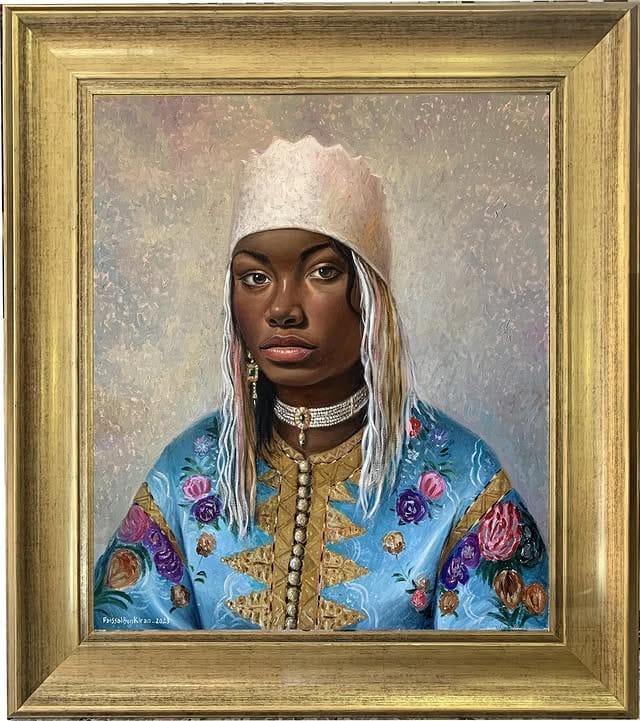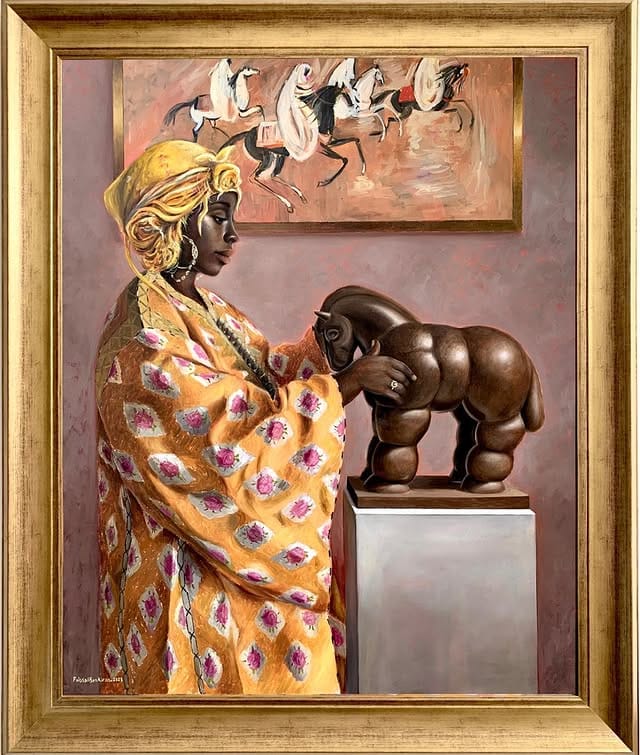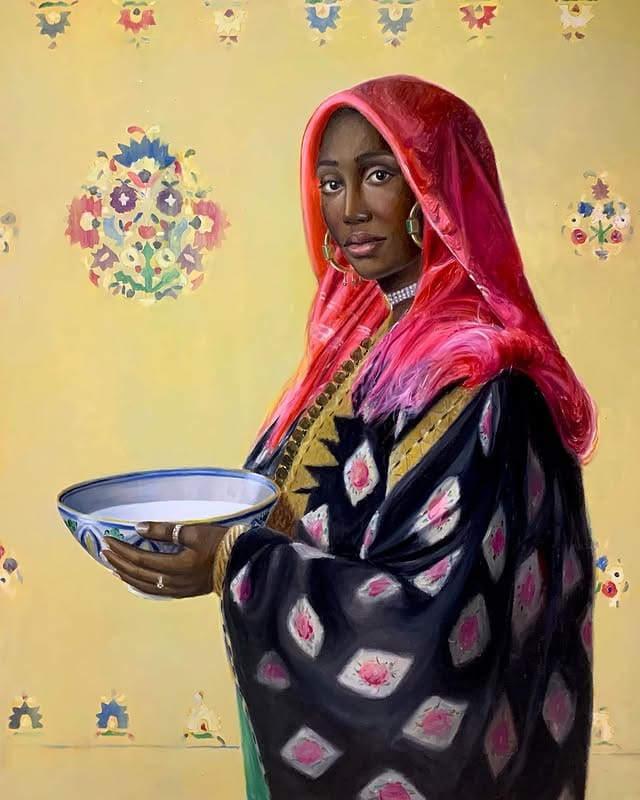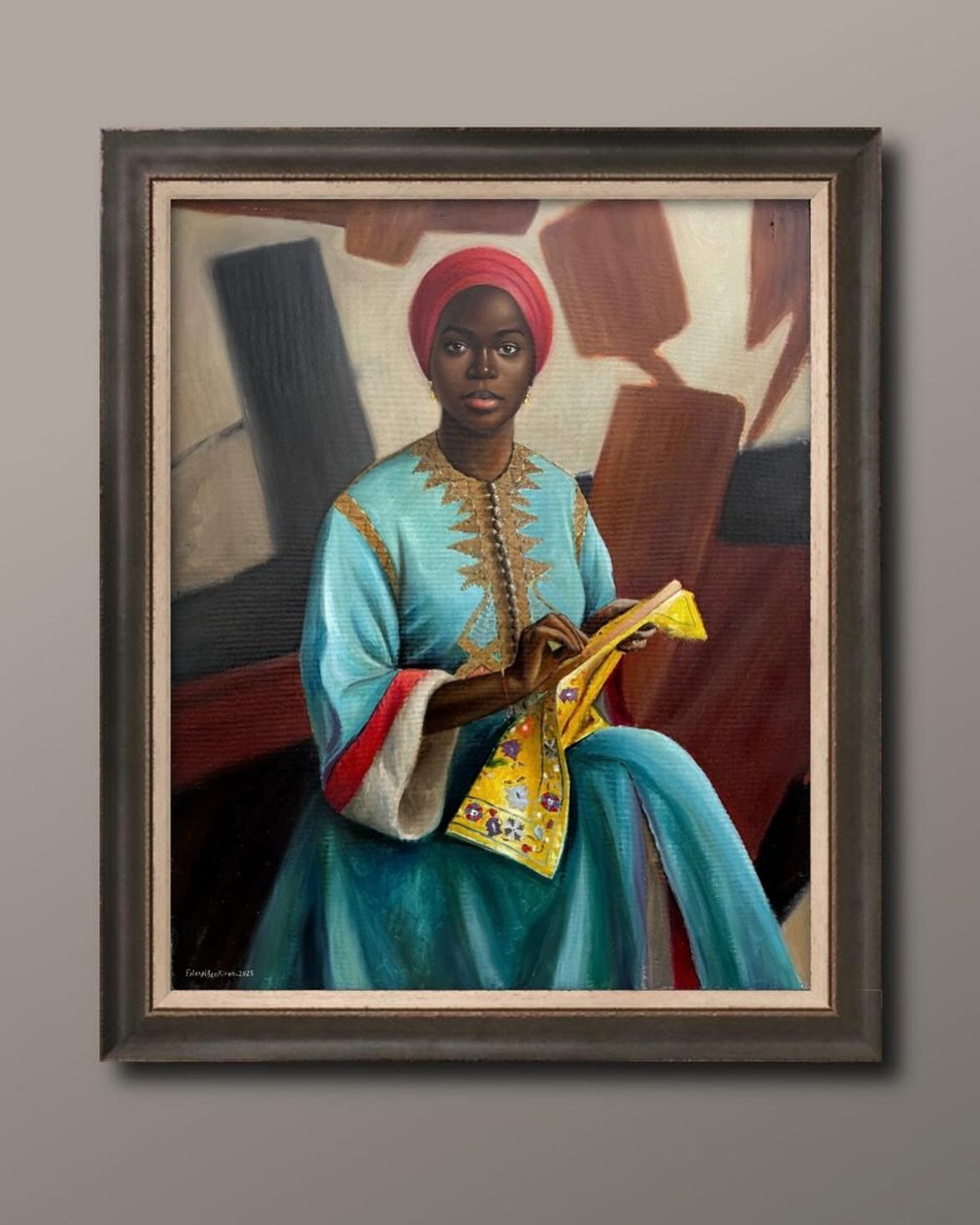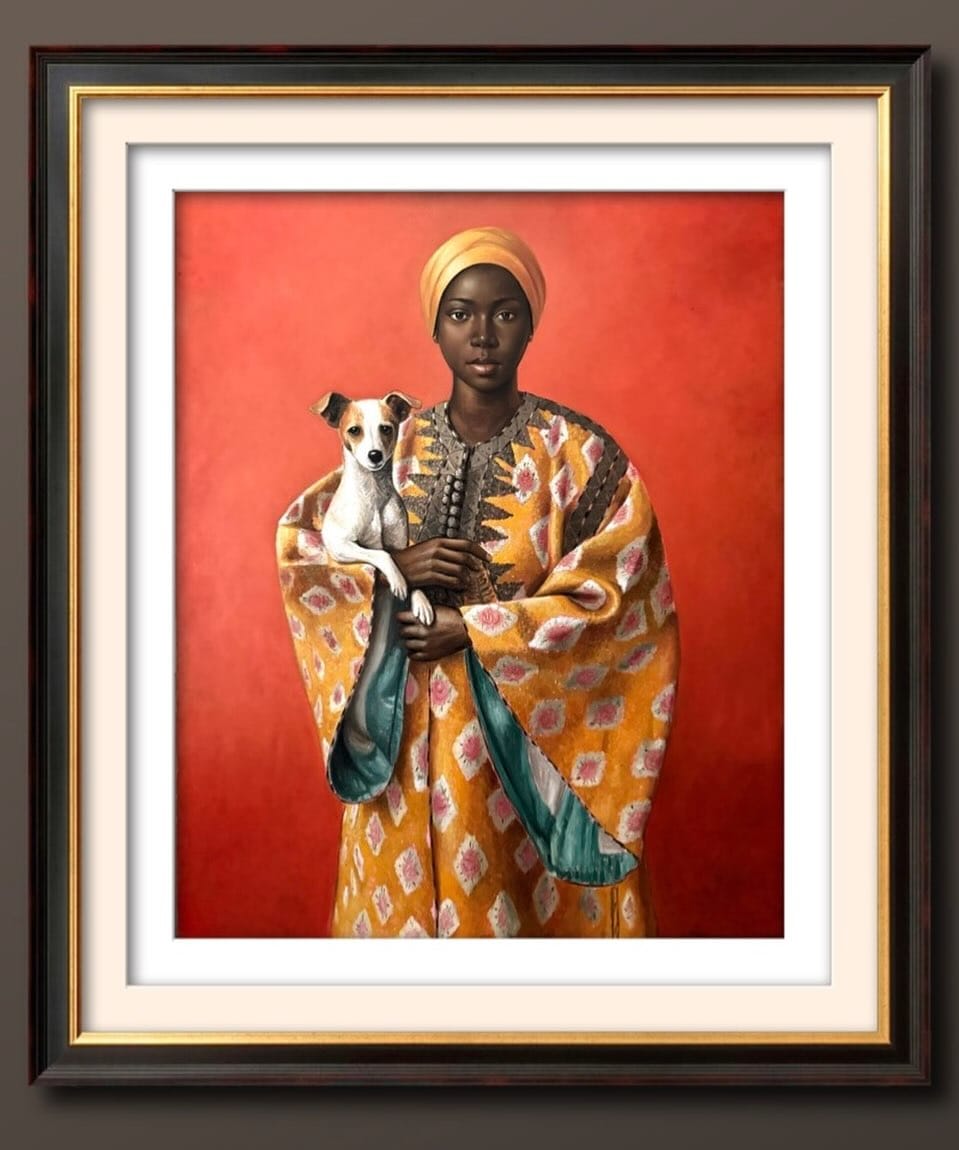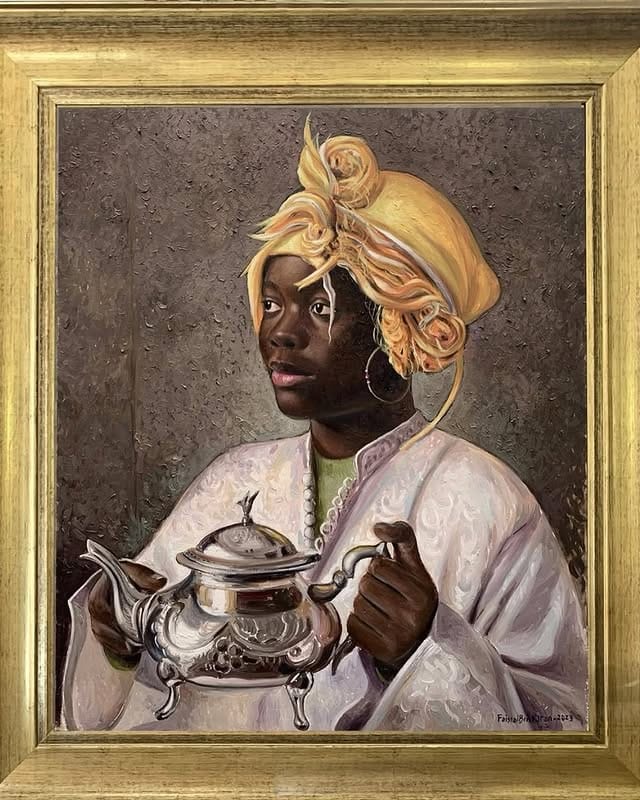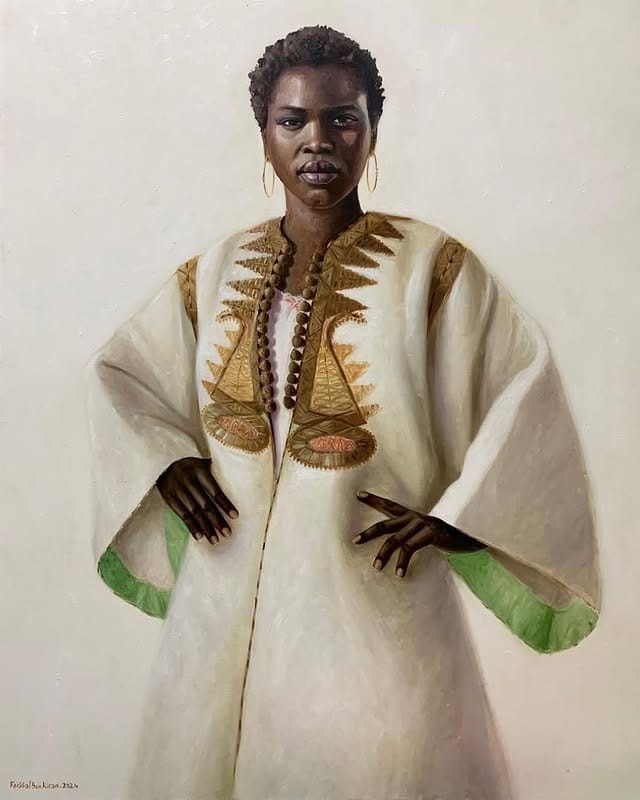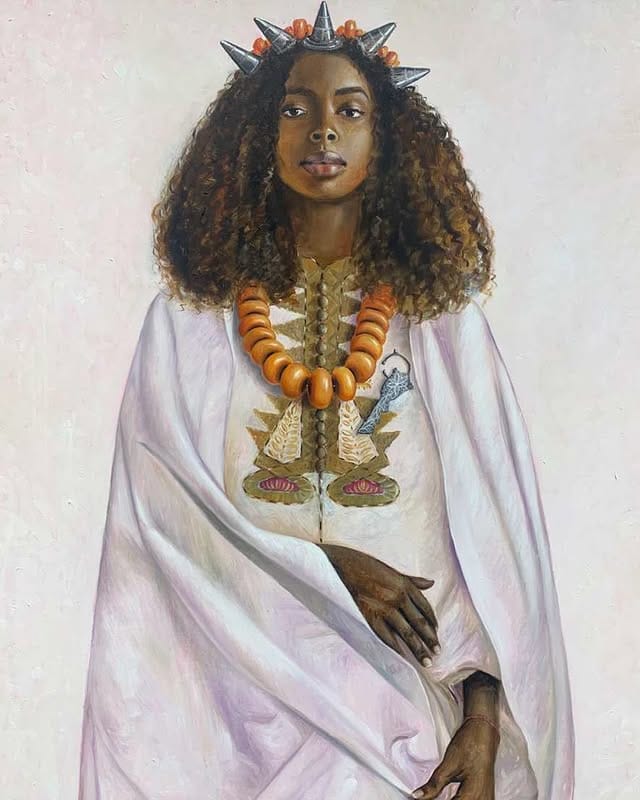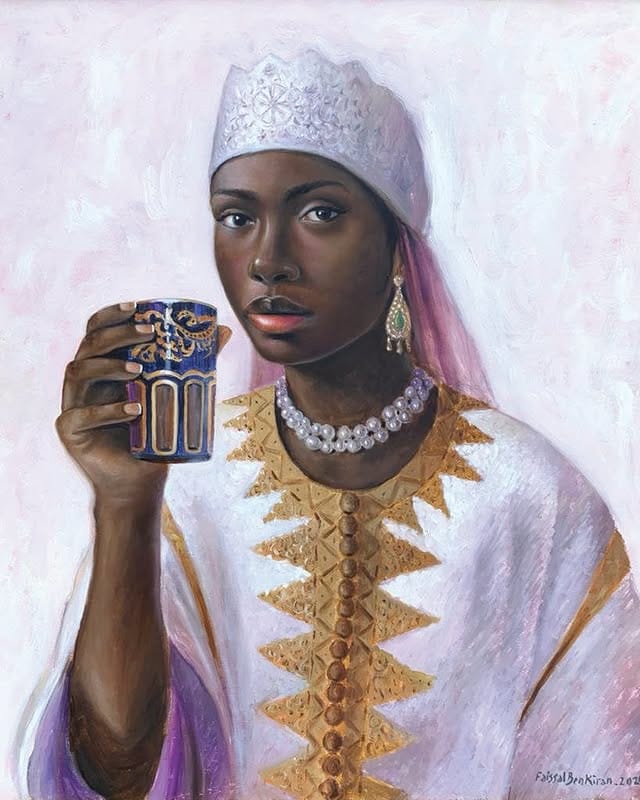Honoring the Dadas: Faissal Ben Kiran’s Warm Tribute
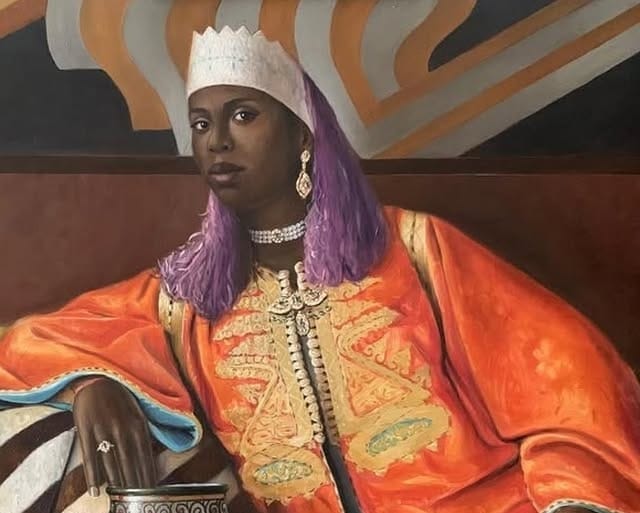
Faissal Ben Kiran, a painter and art teacher based in Tétouan, Morocco, brings quiet strength and layered history to life through his portraits of women. Central to his work are the Dadas: women of sub-Saharan heritage, who played a vital yet often overlooked role in Moroccan domestic life for centuries.
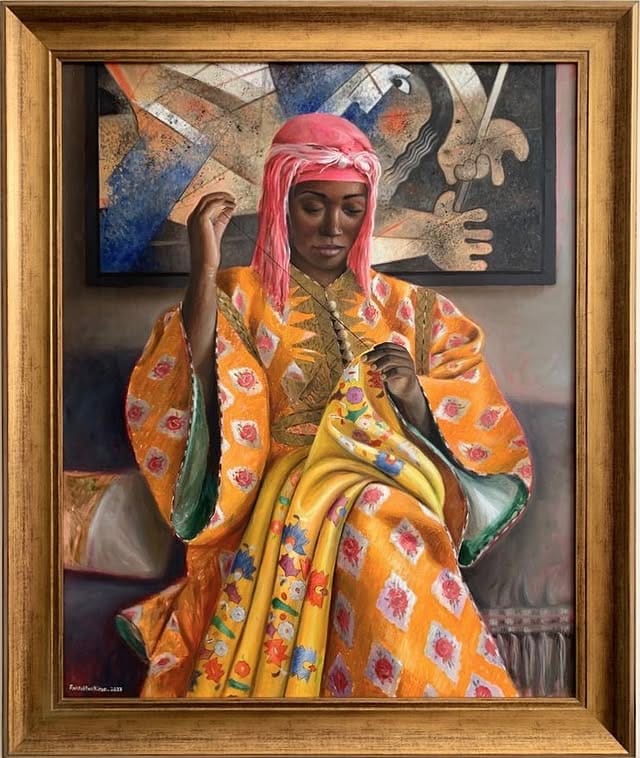
Historically, Dadas were not simply domestic workers. Many arrived as young girls and became part of the families they served, often for generations. They were caregivers, confidantes, guardians of tradition, and emotional anchors in the Moroccan household. In cities like Fez, Marrakesh, and Tétouan, their presence was woven into the intimate rhythms of daily life. Though essential to the social fabric, they rarely appeared in written histories or visual representation. Their legacy lived on in memory, until now.
Ben Kiran reclaims their image with tenderness and precision. In his paintings, these women are no longer anonymous or marginal. They appear composed, proud, and central. He gives them names: Anbar, Marjana, Yaqouta, Batoul and robes made of brocade, silk, or lekhrib, traditional textiles rich in symbolism. He surrounds them with objects of meaning: finely crafted lamps, ceramic vessels, antique clocks, and embroidered cushions, each loaded with historical and cultural resonance. These portraits aren’t just figurative; they are ritualized moments of acknowledgment and respect.
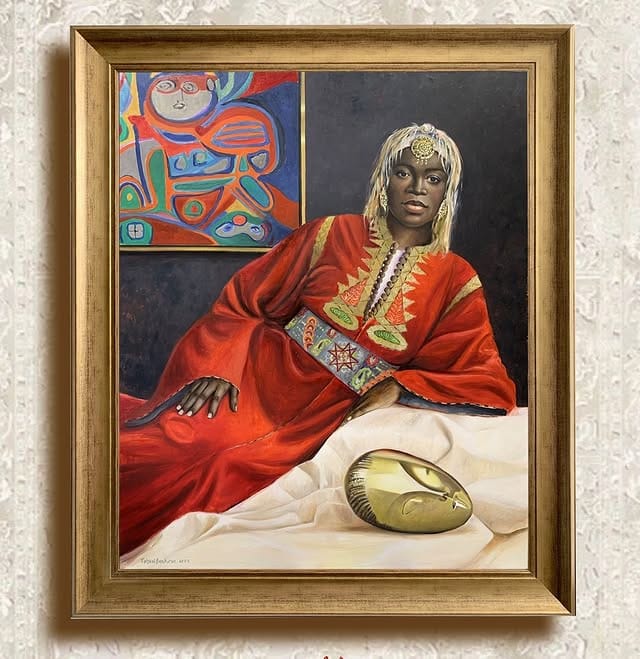
Besides that, Ben Kiran’s compositions are art historically layered. His backgrounds often feature subtle homages to Moroccan modernist masters like Farid Belkahia, Mohamed Melehi, and Chaïbia Talal. Artists who redefined Moroccan visual identity in the mid-20th century through abstraction, symbolism, and the revival of Amazigh and Islamic aesthetics. Ben Kiran also inserts visual nods to European and global figures such as Cézanne, Botero, and Duchamp, creating a kind of space where cultural histories and aesthetics interact.
This multi-layered referencing invites the viewer to engage with the paintings not just visually, but intellectually: to trace the references, recognize the symbolism, and reflect on the gaps in visual heritage.
By centering the Dadas, Ben Kiran reframes their role not as peripheral, but foundational. In doing so, he questions whose stories are told, and how art can be used to rebalance that narrative. His work is a warm, intelligent, and visually rich act of remembrance. A celebration of presence, resilience, and the power of visibility.
